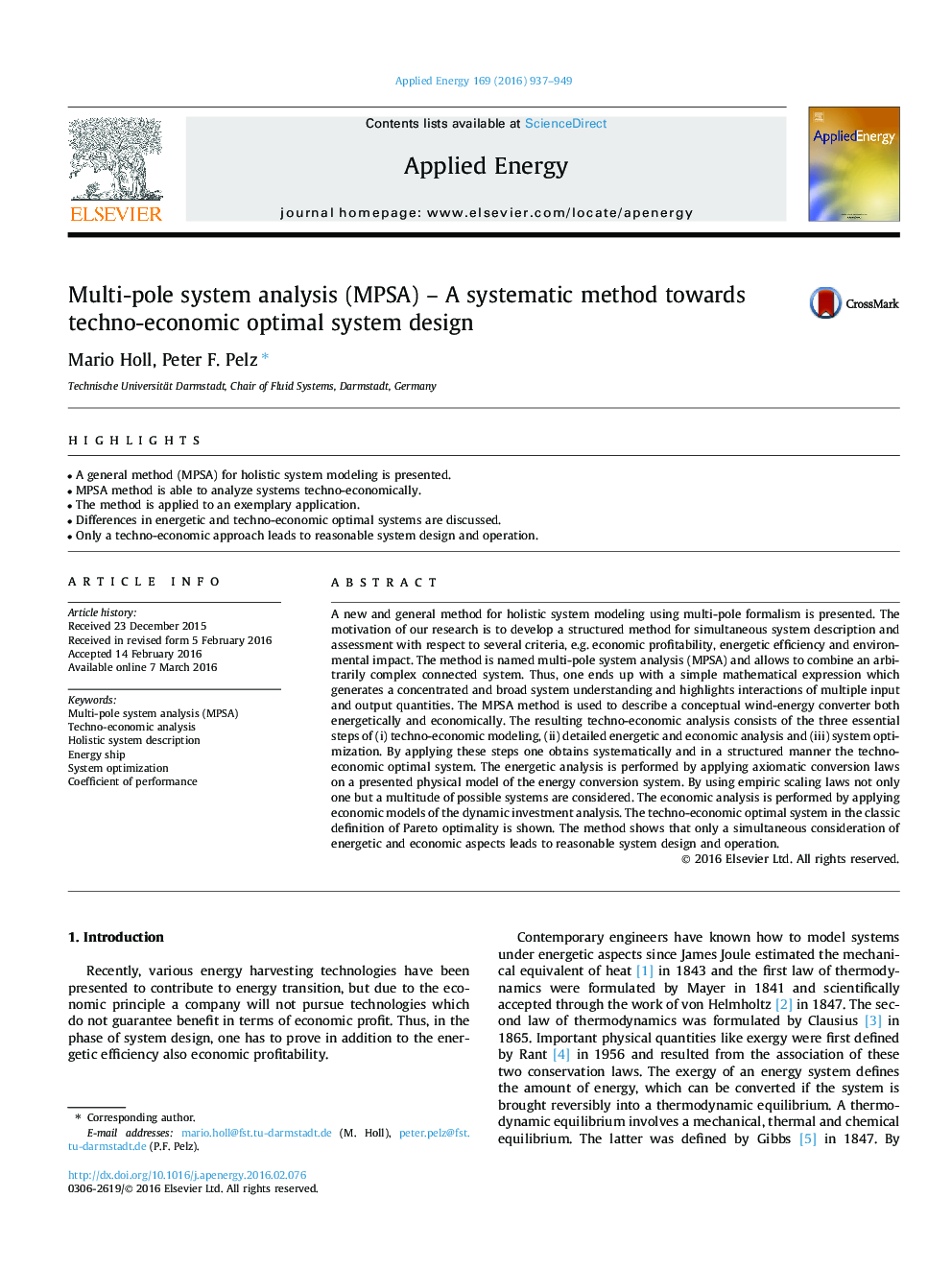| Article ID | Journal | Published Year | Pages | File Type |
|---|---|---|---|---|
| 6683680 | Applied Energy | 2016 | 13 Pages |
Abstract
A new and general method for holistic system modeling using multi-pole formalism is presented. The motivation of our research is to develop a structured method for simultaneous system description and assessment with respect to several criteria, e.g. economic profitability, energetic efficiency and environmental impact. The method is named multi-pole system analysis (MPSA) and allows to combine an arbitrarily complex connected system. Thus, one ends up with a simple mathematical expression which generates a concentrated and broad system understanding and highlights interactions of multiple input and output quantities. The MPSA method is used to describe a conceptual wind-energy converter both energetically and economically. The resulting techno-economic analysis consists of the three essential steps of (i) techno-economic modeling, (ii) detailed energetic and economic analysis and (iii) system optimization. By applying these steps one obtains systematically and in a structured manner the techno-economic optimal system. The energetic analysis is performed by applying axiomatic conversion laws on a presented physical model of the energy conversion system. By using empiric scaling laws not only one but a multitude of possible systems are considered. The economic analysis is performed by applying economic models of the dynamic investment analysis. The techno-economic optimal system in the classic definition of Pareto optimality is shown. The method shows that only a simultaneous consideration of energetic and economic aspects leads to reasonable system design and operation.
Related Topics
Physical Sciences and Engineering
Energy
Energy Engineering and Power Technology
Authors
Mario Holl, Peter F. Pelz,
